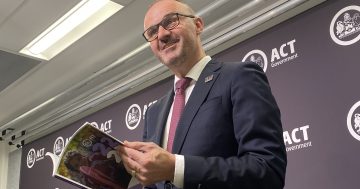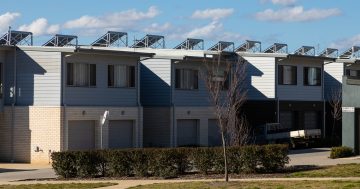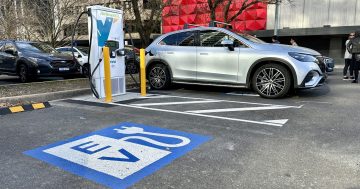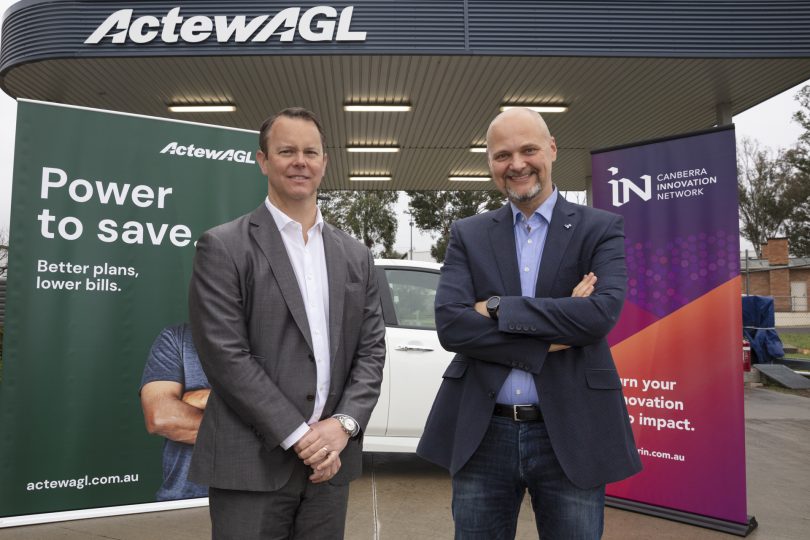
ActewAGL Group Manager New Energy James Dunlop with Canberra Innovation Network CEO Petr Adamek at ActewAGL’s new hydrogen refuelling station in Fyshwick. Photo: Supplied.
Transport accounts for 60 per cent of greenhouse gas emissions and is the largest and fastest-growing source of emissions globally.
It’s the same story here in Canberra, with privately owned transportation being the single biggest contributor. The reason is simple: Canberrans like to drive.
Innovation is essential to reducing greenhouse gas emissions from transport, which is why local energy retailer ActewAGL and the Canberra Innovation Network (CBRIN) have teamed up to deliver a hackathon to bring this complex issue to light.
A hackathon is an event born from the tech world, where a group will typically gather for a short period of time to activate new ways of thinking and collaborate on a central problem.
Called ZETHack, for Zero Emissions Transport Hackathon, the ActewAGL CBRIN hackathon, to be held in November, will draw Australia’s most innovative minds and challenge them to develop ground-breaking solutions that will accelerate adoption and accessibility of zero-emissions transport.
Canberra Innovation Network CEO Petr Adamek says, “Canberra has proven to be a hotbed when it comes to conceptualising and testing innovation, and will provide the perfect platform for this innovation challenge”.
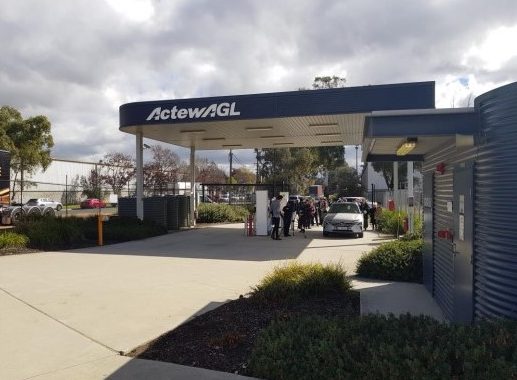
As a clean fuel, hydrogen could become a replacement for fossil fuels. Photo: Supplied.
Zero emissions vehicles like hydrogen and electric-powered cars offer clean, emission-free alternatives to traditional combustion engines vehicles and Petr says community and government adoption of zero-emission vehicles will play a pivotal role in getting the ACT’s carbon emissions to net-zero by 2045.
“There is a need to innovate how we implement smart vehicle-to-grid systems in order to accelerate the transition to renewable electricity in our industries and communities,” Petr said.
“This online hackathon will empower teams to develop and pitch innovative projects that fast-track the accessibility of zero-emission transportation to test in the ACT.”
The solutions can include policy, new technology, vehicle-to-grid options, innovative financial models and charging infrastructure.
“We are excited to be delivering this hackathon with ActewAGL and working towards a common goal for Canberra to be recognised globally as a clever, connected and creative city, where science and research meets innovation and entrepreneurship,” Petr said.
“The Zero Emission Transport Hackathon is calling on innovators, businesses, researchers, students, entrepreneurs and anyone who thinks that they have the next big thing in zero-emission transportation. We’re bringing together different communities nation-wide to conceptualise, test and present novel solutions that accelerate the accessibility to zero-emission transportation across Australia.
“Not only will participants be making an impact on climate change, throughout the week they will have access to resources, workshops, mentors, motivational industry speakers and judges.”
Winning teams will compete for a $10,000 prize pool and will be invited to participate in a 12-week incubation program that includes intensive mentoring and coaching to trial the concepts in the ACT. The program will create the foundations for the teams to turn their pilots into a viable business and be facilitated by the Canberra Innovation Network.
The online event is on 9 to 13 November 2020. Applications close 3 November 2020. For more information visit Canberra Innovation Network.
